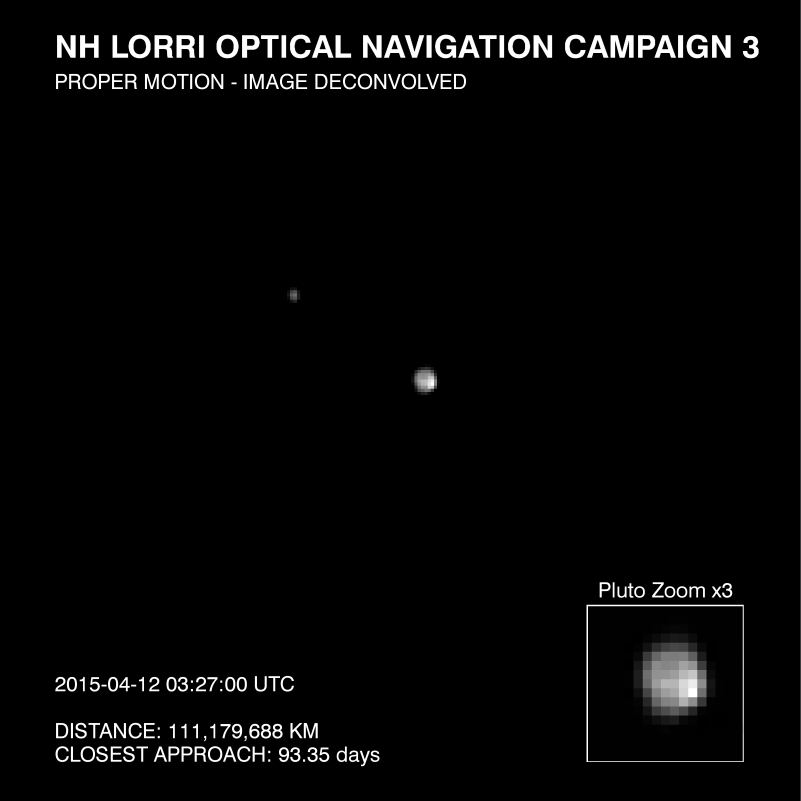The images were captured using its telescopic Long Range Reconnaissance Imager (LORRI) camera in early to mid-April, as it closed within 70 million miles. A technique called image deconvolution sharpens the raw, unprocessed images beamed back to Earth. New Horizons scientists interpreted the data to reveal the dwarf planet has broad surface markings – some bright, some dark – including a bright area at one pole that may be a polar cap.

Credit: NASA/Johns Hopkins University Applied Physics Laboratory/Southwest Research Institute
Two animated GIfs show a series of LORRI images of Pluto and Charon taken at 13 different times spanning 6.5 days, from April 12 to April 18, 2015. During that time, the spacecraft’s distance from Pluto decreased from about 69 million miles to 64 million miles.
Pluto and Charon rotate around a center-of-mass - the barycenter - once every 6.4 Earth days, and these LORRI images capture one complete rotation of the system. The direction of the rotation axis is shown in the figure. In one of these movies, the center of Pluto is kept fixed in the frame, while the other movie is fixed on the center of mass, accounting for the “wobble” in the system as Charon orbits Pluto.
The 3x-magnified view of Pluto highlights the changing brightness across the disk of Pluto as it rotates. Because Pluto is tipped on its side (like Uranus), when observing Pluto from the New Horizons spacecraft, one primarily sees one pole of Pluto, which appears to be brighter than the rest of the disk in all the images. Scientists suggest this brightening in Pluto’s polar region might be caused by a “cap” of highly reflective snow on the surface. The “snow” in this case is likely to be frozen molecular nitrogen ice. New Horizons observations in July will determine definitively whether or not this hypothesis is correct.
In addition to the polar cap, these images reveal changing brightness patterns from place to place as Pluto rotates, presumably caused by large-scale dark and bright patches at different longitudes on Pluto’s surface. In all of these images, a mathematical technique called “deconvolution” is used to improve the resolution of the raw LORRI images, restoring nearly the full resolution allowed by the camera’s optics and detector.
“After traveling more than nine years through space, it’s stunning to see Pluto, literally a dot of light as seen from Earth, becoming a real place right before our eyes,” said Alan Stern, New Horizons principal investigator at Southwest Research Institute in Boulder, Colorado. “These incredible images are the first in which we can begin to see detail on Pluto, and they are already showing us that Pluto has a complex surface.”
The images the spacecraft returns will dramatically improve as New Horizons speeds closer to its July rendezvous with Pluto.
“We can only imagine what surprises will be revealed when New Horizons passes approximately 7,800 miles (12,500 kilometers) above Pluto’s surface this summer,” said Hal Weaver, the mission’s project scientist at the Johns Hopkins University Applied Physics Laboratory (APL) in Laurel, Maryland.






Comments